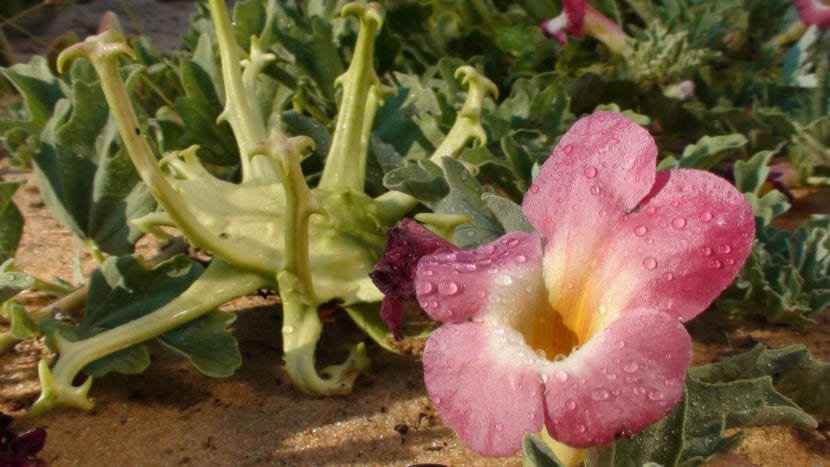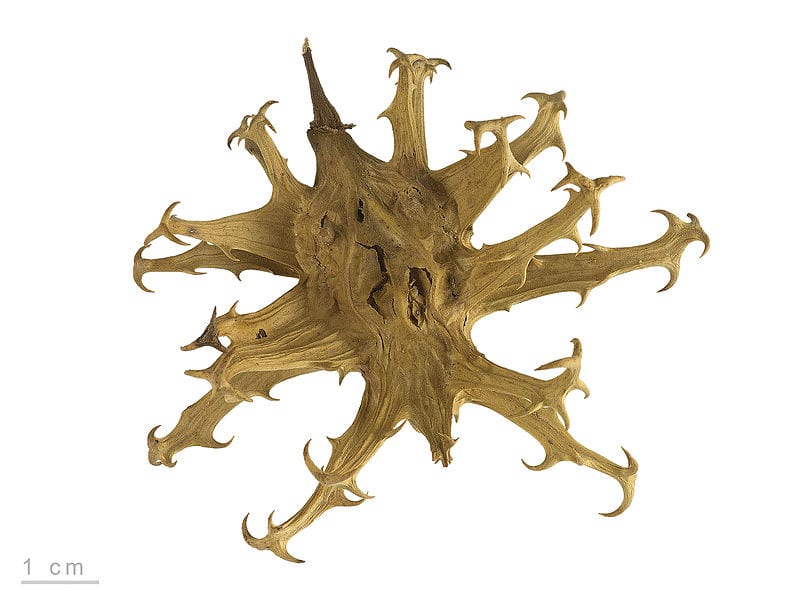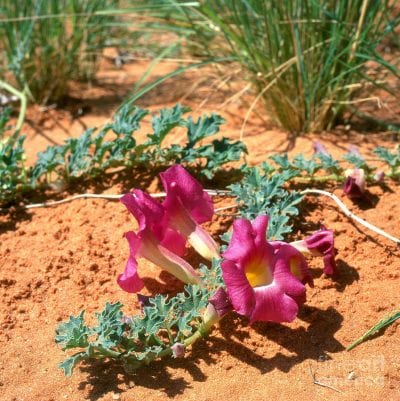
Image - kalaharibiocare.com
Plants that inhabit deserts have something special. When they bloom, their flowers amaze more than one. But it is also that many of them are medicinal, such as harpagophyte.
This prostrate weed looks like it doesn't have to be a big deal, but if you get a chance to see its petals, you can change your mind right away. And that's not to mention the benefits it has for our health. Discover it,
Origin and characteristics
The harpagophyte (literally, plant with hooks in Greek), also called devil's claw, is a xerophytic rhizomatous herb -which is adapted to living in a dry environment-. Of prostrate bearing, it develops stems up to 1,5 meters in length which sprout from a rhizome with tubers up to 20 cm in length. The leaves are opposite, lobed, greyish green in color and 65mm long by 40mm wide.
The flowers are funnel-shaped, up to 7cm long, in colors ranging from red to purple, with a yellowish base. The fruit is a flat capsule armed with two central spines up to 7cm in length and two rows of 12-16 lateral spines. that curve perpendicular to the main axis… hence their common names 🙂.
What are their cares?

We do not know if you want to have such a dangerous plant at home, but we still tell you how to take care of it in case you dare to get one:
- Location: outside, in full sun.
- Earth:
- Pot: universal growing substrate mixed with perlite in equal parts.
- Garden: must have very good drainage.
- Irrigation: about 2 or maximum 3 times a week in summer, and every 6-7 days the rest of the year.
- Subscriber: from early spring to late summer with organic fertilizers. In case of having it in a pot, you must use liquid fertilizers.
- Multiplication: by seeds in spring. Direct sowing in seedbed.
- Rusticity: it is sensitive to cold and frost.
What medicinal uses does it have?

Image - fineartamerica.com
The devil's claw is a medicinal plant whose secondary root once dried it is used mainly to treat joint pain as well as tendinitis. It is also useful in cases of flatulence, bloating or loss of appetite.
In addition, has anti-inflammatory properties if administered intraperitoneally. But even so, its consumption is not recommended for pregnant women, infants, or people who have cardiovascular problems, or gastric or duodenal ulcers.
What did you think of this plant?